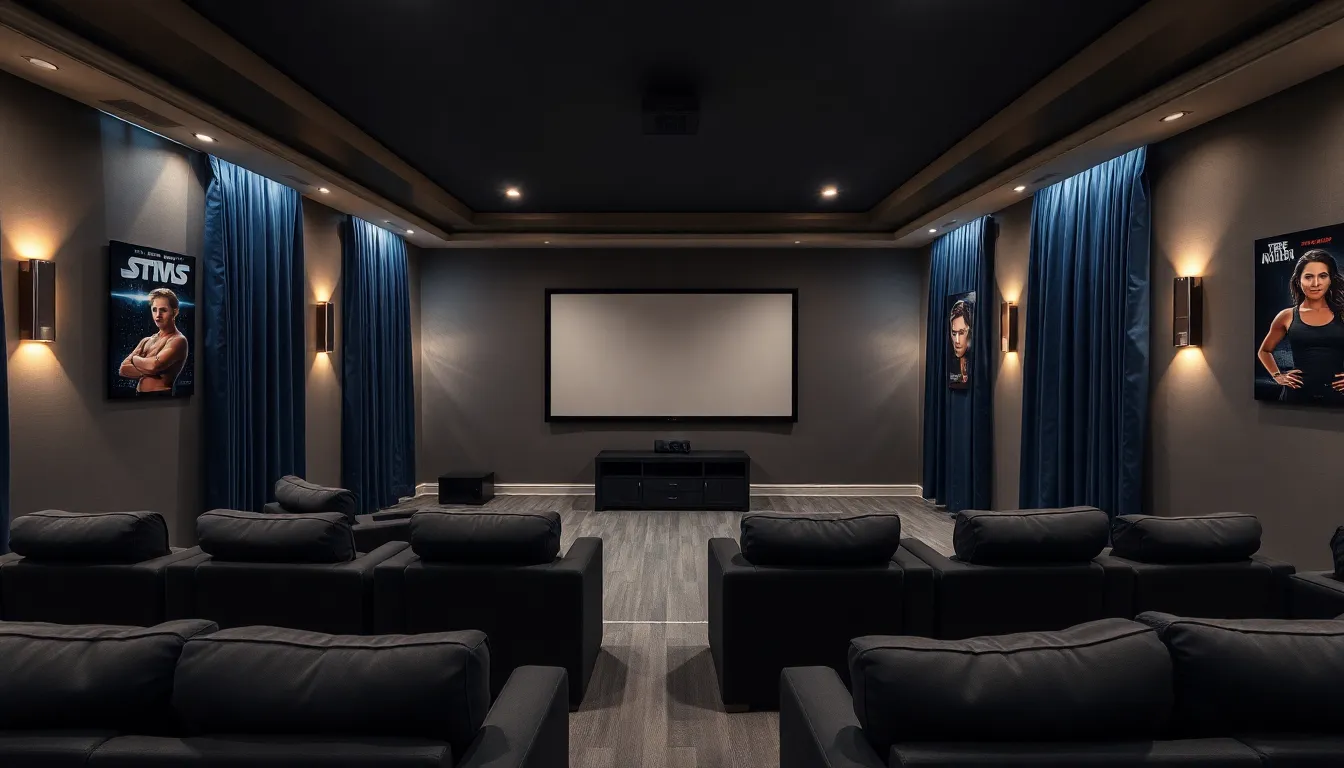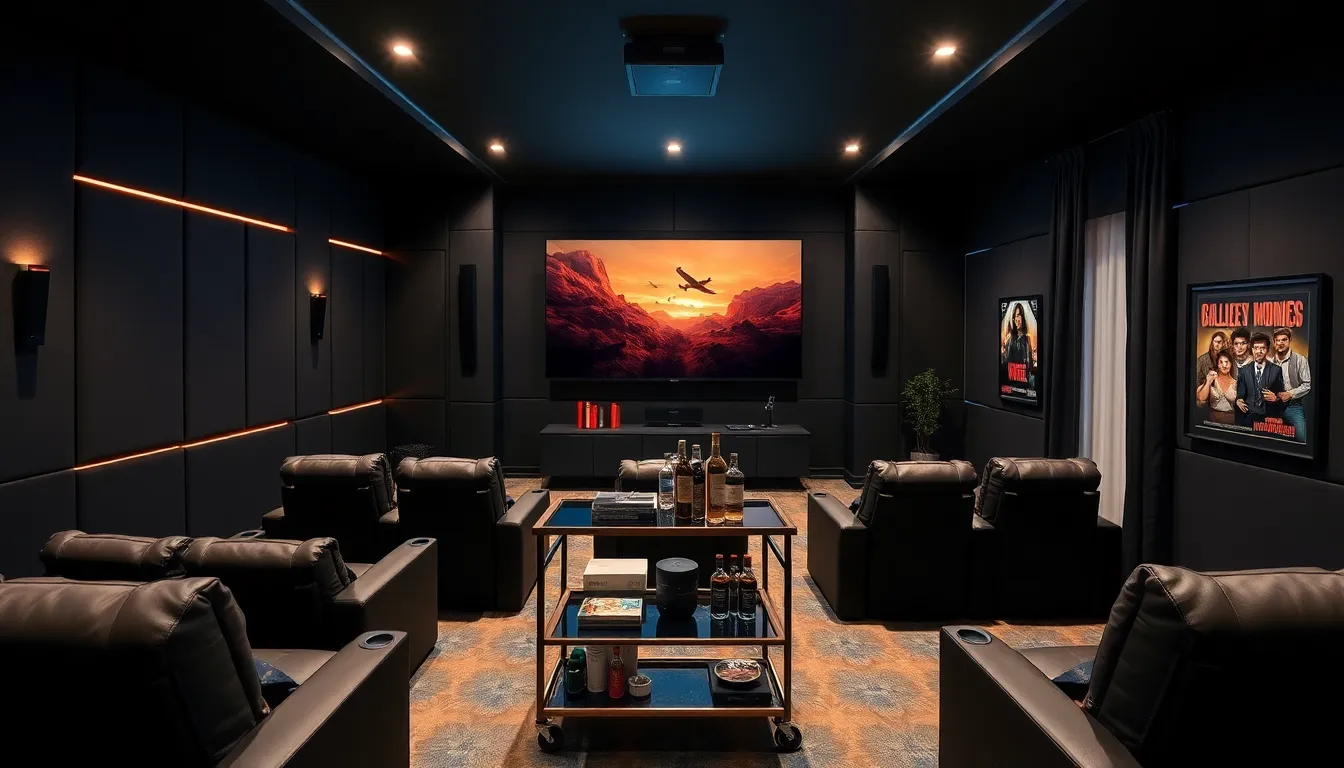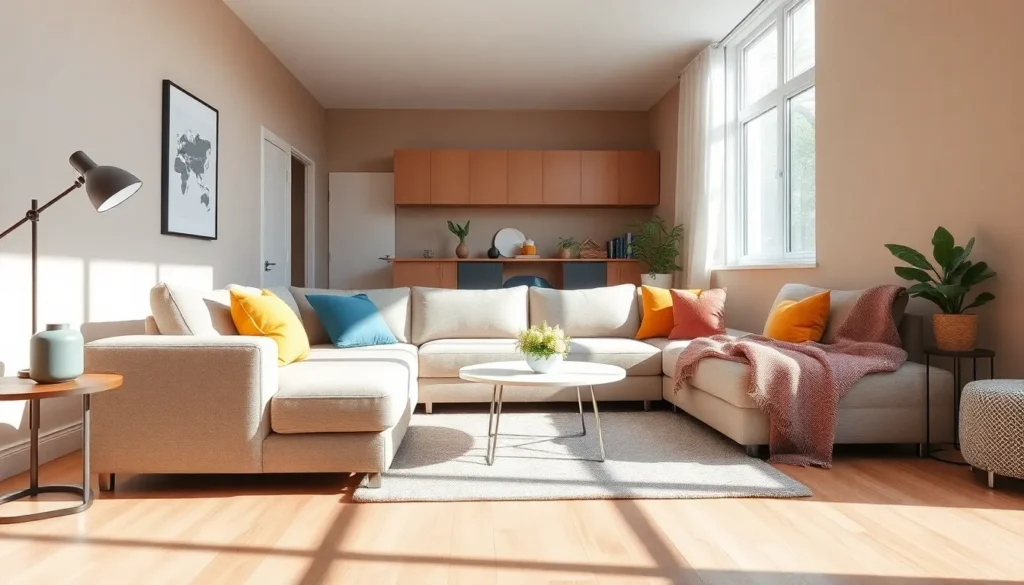Are you tired of watching blockbuster films in the dull confines of your living room? Imagine transforming an ordinary space into an extraordinary home theater room that rivals your local cinema. Sounds enticing, doesn’t it? With the right ideas, you can create a personalized viewing paradise where popcorn is plentiful, and the sound quality is pristine. Strap in and let’s explore how to make your home theater dreams a reality.
Table of Contents
ToggleChoosing The Right Space

The first step in any successful home theater room project is selecting the perfect location. Ideally, this should be a quiet area where outside noise doesn’t disrupt your cinematic experience. Basements and spare rooms are often the top contenders: they’re typically surrounded by walls that can keep sound in and distractions out. You’ll also want to consider the size of the room. A larger space allows for more elaborate setups, while a smaller area can create an intimate atmosphere. Ideally, the room should be versatile enough to accommodate everything from intense action flicks to cozy family movie nights.
Natural Lighting
Natural light can wreak havoc on your theater experience by washing out your screen. If possible, select a room with minimal windows or consider blackout curtains for those rare daylight screenings. The goal here is to create an environment where the visuals can shine and the immersion is complete.
Design Considerations
When it comes to design, you’re in charge of setting the mood. Choose colors that enhance your viewing experience, darker shades tend to minimize reflections on screens and set a more immersive tone. Soft materials can help with sound quality by reducing echoes, contributing to a clearer audio experience.
Layout Planning
Utilizing a well-thought-out layout goes a long way. Think about the positioning of your screen and seating: the ideal viewing distance is usually about 1.5 to 2.5 times the diagonal size of the screen. Create a layout that allows everyone to have an unobstructed view while maintaining comfort.
Essential Equipment
Now that the space and design are figured out, let’s jump into the essential equipment that will elevate your home theater experience. First and foremost, the screen. Whether opting for a flat-screen TV or a projector, size matters, a larger screen typically offers a more immersive experience.
Audio System
Next up is sound. A good audio setup can make or break your movie nights. Consider investing in a surround sound system that envelops listeners, amplifying the excitement. Look for quality speakers that offer clarity and depth for that cinema-quality experience.
Streaming Devices and Sources
Don’t forget content. Streaming devices like Roku, Apple TV, or Amazon Fire Stick provide endless entertainment options. Subscription services such as Netflix, Hulu, and Disney+ can keep your binge-watching schedule packed.
Seating Arrangements
Selecting the right seating can enhance comfort and provide an enjoyable viewing experience. From recliners to sofas, options abound for designing a cozy theater setup. But seating placement within the room can make a huge difference.
Lighting Options
Consider adjustable lighting fixtures to control brightness. Dimmer switches or LED strips can create that ideal cinematic vibe. Just imagine, soft lighting for that dramatic movie scene or brightened lights for the laugh-out-loud comedy.
Acoustic Treatments
Acoustic treatments can significantly enhance sound quality. Strategically placing rugs, wall panels, or even specialized curtains can absorb sound and prevent an echo, ensuring that every dialogue is crystal clear.
Decorative Elements
Who says functionality can’t be stylish? Adding decorative elements can personalize your home theater room and make it a welcoming space. Consider wall art representing favorite movies or vintage movie posters to invoke nostalgia. A classy bar cart stocked with snacks and drinks could also become a conversation starter while elevating the experience.
Budgeting Your Home Theater
Budgeting your home theater project is crucial to avoid financial strain. List out everything from equipment to decor and prioritize your spending. Start with the essentials, and then allocate funds for upgrades. Having a clear budget helps keep excitement from turning into overspending, so keep note of those must-have items while leaving room for indulgences down the line.




